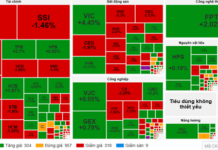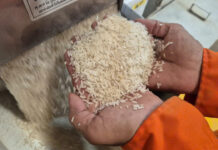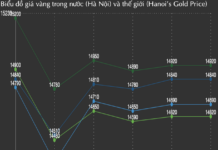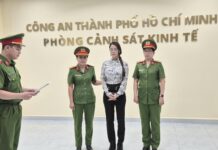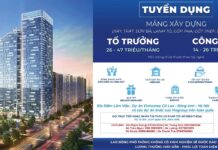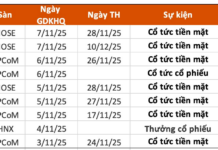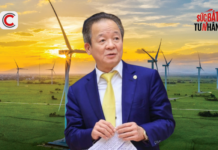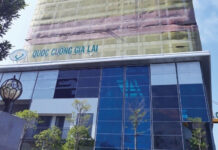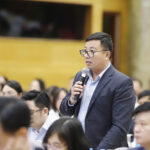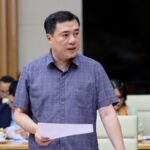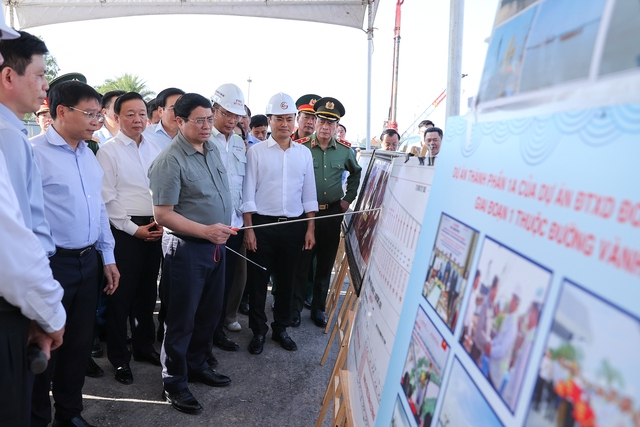
Prime Minister Pham Minh Chinh checks the progress of the construction of the Ho Chi Minh City Belt Road 3 on the territory of Ho Chi Minh City – Photo: VGP/Nhat Bac
Accompanying the Prime Minister are Party Central Committee members: Deputy Prime Minister Tran Hong Ha, Minister – Chairman of the Government Office Tran Van Son, Minister of Transport Nguyen Van Thang, Minister of Construction Nguyen Thanh Nghi, Lieutenant General Le Quoc Hung, Deputy Minister of Public Security; leaders of central ministries, sectors, and agencies.

Prime Minister visits and encourages workers on the construction project – Photo: VGP/Nhat Bac
According to the report of the Ministry of Transport and Ho Chi Minh City People’s Committee, the investment project for the construction of Ho Chi Minh City Belt Road 3 has a total length of about 76.34 km with a complete stage scale of 08 high-speed lanes; parallel roads on both sides (02-03 urban roads with 2-3 lanes); 04 segmented stages with 4 high-speed lanes, parallel roads on both sides (02-03 urban roads) with non-continuous investment.
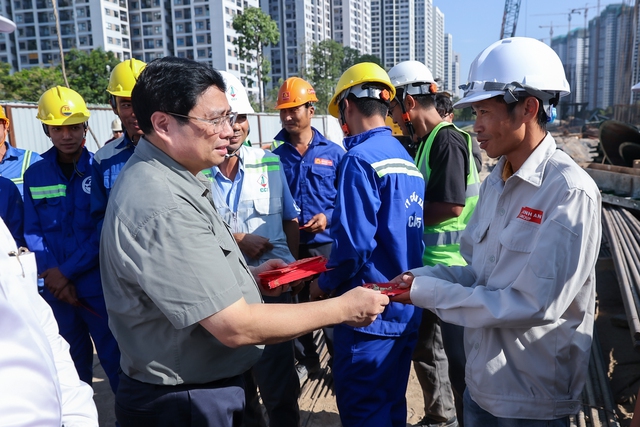
Prime Minister sends Tet greetings to workers working on the project in Ho Chi Minh City – Photo: VGP/Nhat Bac
The project passes through the territories of 4 localities including Ho Chi Minh City, Dong Nai, Binh Duong, Long An, with a preliminary total investment of 75,378 billion VND, basically completed in 2025 and put into operation from 2026.
The project is divided into 08 component projects including 04 construction component projects and 04 site clearance component projects, assigned to the Ho Chi Minh City People’s Committee, and the provinces of Dong Nai, Binh Duong, and Long An as the managing authorities, implementing investment in the form of public investment.
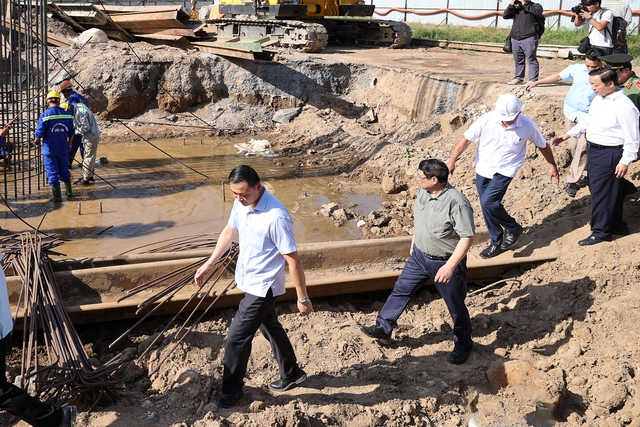
Prime Minister inspects Ho Chi Minh City Belt Road 3 – Photo: VGP/Nhat Bac
The entire project has handed over 571/658 ha of land, reaching 87%, of which Ho Chi Minh City and Long An have reached 98%, Binh Duong has reached 86%, and Dong Nai has only reached 6.2%.
Regarding the selection of contractors, groundbreaking, and implementation of construction for the projects, Long An has exceeded the progress, while in Ho Chi Minh City and Binh Duong, the construction has basically met the progress. Dong Nai is behind schedule compared to the plan. The entire project has achieved a construction output of 1,526 billion VND / 13,577 billion VND (11.2%).
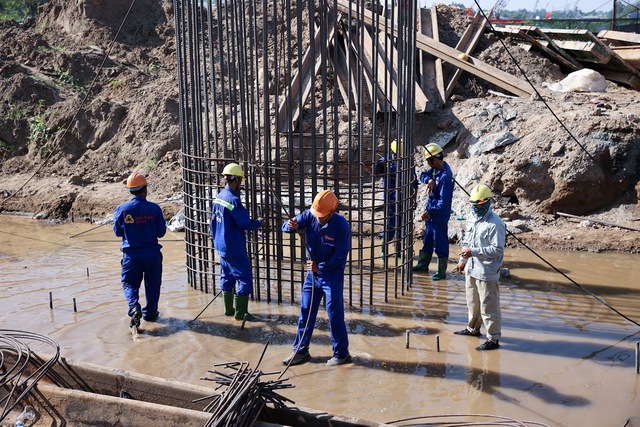
However, the project still faces some difficulties, obstacles, especially the demand for foundation sand materials of about 9.2 million m3, while the supply of sand materials is at risk of shortage, and the full source of supply has not been determined. Dong Nai Province has only handed over 6.2% of the land, affecting the project implementation progress.
Chairing the meeting with ministries, sectors, localities, investors, and related units at the site, Prime Minister Pham Minh Chinh acknowledged and praised the efforts and contributions of ministries, sectors, and localities in implementing the project; the project management board, contractors, and related units have actively worked during Tet and holidays with the spirit of “overcoming the sun, conquering the rain”, “seizing the opportunity, working urgently”, “only focusing on work and not delaying”…
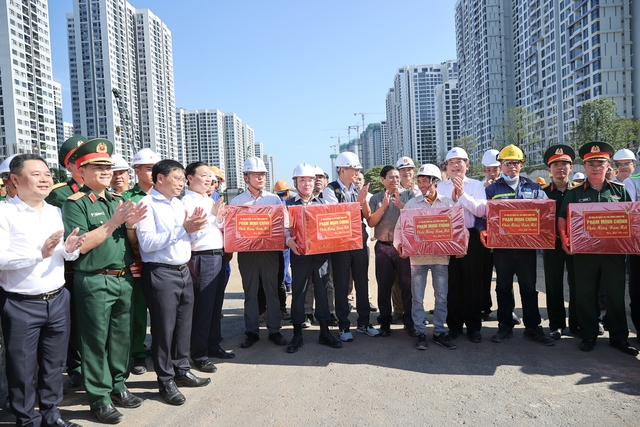
Prime Minister presents gifts to workers working on the project – Photo: VGP/Nhat Bac
The Prime Minister requested to provide further encouragement to the team of officials, workers, and employees who sacrificed their Tet holidays with their families to stay at the construction site. At the time of the Prime Minister’s visit, there were about 300 workers working on the project in Ho Chi Minh City.
Note that the Ho Chi Minh City Belt Road 3 project has significant importance for regional connectivity and connection with the major arteries towards the center of Ho Chi Minh City, the Prime Minister suggested that the agencies determine that 2024 and 2025 are years of acceleration and breakthrough to complete the project on schedule, strive to exceed the progress, ensure quality, safety, prevent corruption, negative practices, and waste.
The Prime Minister asked the Minister of Transport and the Chairman of the Ho Chi Minh City People’s Committee to hold monthly meetings to review the progress of the Belt Road 3 project. At the same time, the Ministry of Transport (the investor) and Dong Nai Province (responsible for site clearance) should expedite the project progress of Nhon Trach Bridge.

Prime Minister presides over a meeting with ministries, sectors, localities, investors, and related units at the site – Photo: VGP/Nhat Bac
The Prime Minister also noted that the Belt Road 3 route, as well as many other projects in Ho Chi Minh City, in addition to the factors of progress and quality, must ensure aesthetic, landscape, and environmental factors such as lighting systems, green trees, making each work a highlight, contributing to tourism development.
Also at the working session, the Prime Minister had guiding opinions on some related issues that need to be resolved.
Regarding the issue of using sand as a foundation material for the Belt Road 3 project, the Prime Minister assigned Deputy Prime Minister Tran Hong Ha to preside over and convene a meeting with relevant ministries immediately after the working trip to urgently and completely resolve the issue before February 28.
The Prime Minister requested that the Ministry of Natural Resources and Environment actively handle issues related to the supply of conventional construction materials with the spirit of streamlining procedures, ensuring timely material supply for projects; everything must be done openly, transparently, for the country, for the people, anti-corruption, negative practices, group interests; relevant ministries and sectors must soon issue standards, technical regulations on the use of sea sand for filling materials; localities must also coordinate closely.
Reporting further on this matter, Minister of Transport Nguyen Van Thang said that the agencies have agreed to use sea sand as filling materials for the Ho Chi Minh City Belt Road 3 with certain technical requirements; it is expected that in April, the use of sea sand for the high-speed road foundation will be widely implemented.
Regarding the Ho Chi Minh City-Moc Bai (Tay Ninh) Expressway project (connecting with both the Belt Road 3 and 4 of Ho Chi Minh City), the Ministry of Planning and Investment urgently submitted to the Prime Minister for approval of the investment policy; make efforts to start construction before April 30, 2024. Ministries and sectors must renew their thinking, methods, and flexible approaches with the spirit of all for the common interests of the country, in which the direction should be the shortest, straightest possible.
As for the Can Gio International Transit Port project, the Government leaders have repeatedly given directions, the Prime Minister emphasizes the requirement to carefully evaluate environmental impacts, consult opinions of scientists in the spirit of ensuring environmental protection, especially the Can Gio Biosphere Reserve, do well in communication to create unanimity, especially in terms of the environment and project effectiveness, accelerate the implementation of tasks in accordance with regulations.

